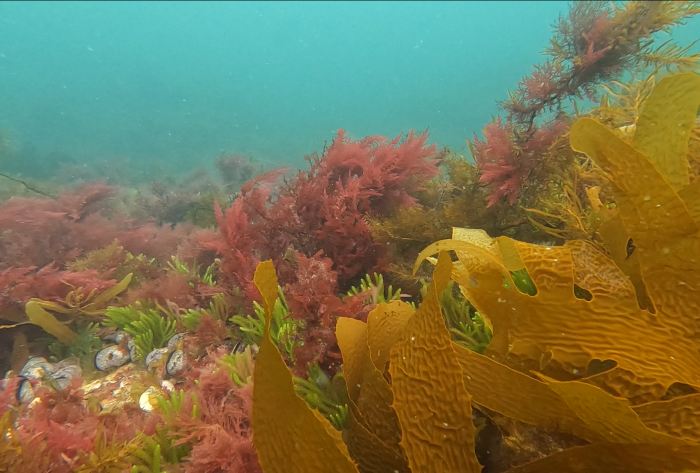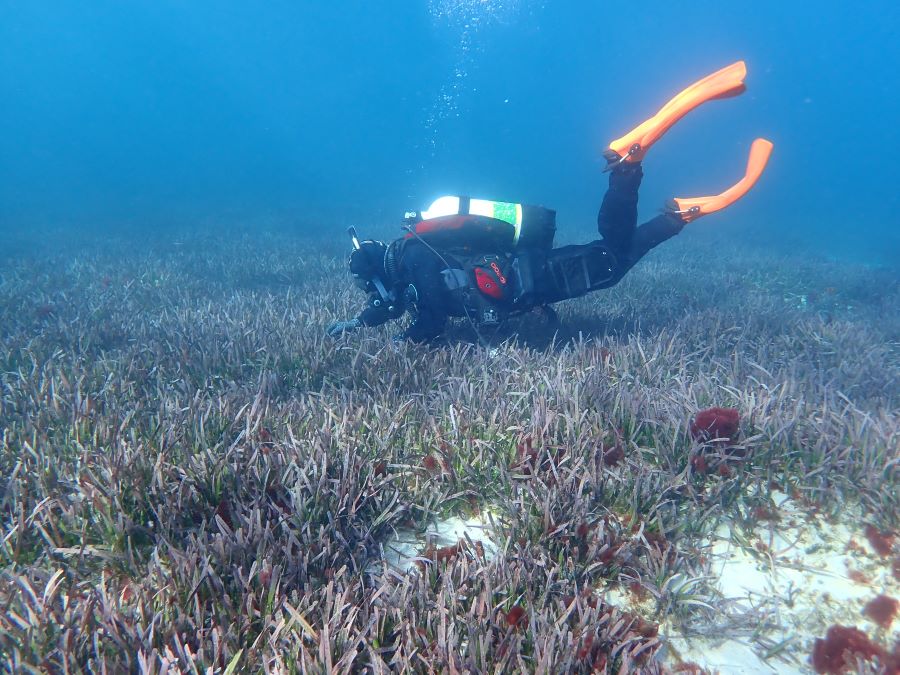Our seaweed scientists are mapping the distribution, abundance and chemical variation of Asparagopsis armata around Tasmania to support a budding aquaculture industry that’s helping reduce livestock methane emissions, as IMAS Ecology and Biodiversity Deputy Centre Head and project lead, Associate Professor Jeff Wright explains.
Asparagopsis is a small red seaweed that’s native to Tasmania. Sea Forest is the only Tasmanian company producing this seaweed for use as a feed supplement to help reduce livestock methane production in the agricultural sector.
The IMAS team is collecting data that will allow Sea Forest to identify and target sites with high-quality Asparagopsis that can be used as seed stock for cultivation at either their Triabunna or Swansea farms.
This research will also determine whether different genetic strains exist in Tasmania and whether these strains have different bioactive potential.
Bioactives are natural compounds that Asparagopsis produce to fight bacteria in the ocean, but these compounds also inhibit the bacteria that produce methane in the rumen of cows and sheep. The inhibition of these bacteria reduces methane emissions.
The information gathered in this project will also assist the Department of Natural Resources and Environment Tasmanian (NRE Tas) with managing Asparagopsis seedstock collection.
Tackling a global farming challenge…
Methane production from farmed livestock is a significant contributor to global greenhouse gas emissions.

Asparagopsis is a potential solution to this issue as it produces bioactive compounds that, when fed in small amounts to cattle and sheep, can reduce methane emissions by up to 98% – and this is why it’s been identified as a species with significant commercial livestock feed potential.
While Asparagopsis is native to Tasmania, we currently don’t have basic information on where it grows, its seasonal patterns of abundance, reproduction and bioactive compounds, and whether there are genetically different strains. The overall aim of this project is to address these knowledge gaps.
Diving into the sea for answers…
To tackle these questions, our IMAS field research team, led by our Ecology and Biodiversity Research Assistant Charley McAneney, is sampling and comparing bioregional and seasonal variations of Asparagopsis at 15 sites across five Tasmanian regions over a 12-month period.
They are using an underwater towed video camera (see video below), photographs and diver surveys.

This allows us to map Asparagopsis distribution and abundance and to collect seaweed samples for analysis of the bioactive compounds that cause methane reduction. We’ll also use these samples for analysing Asparagopsis genetics and reproduction.
Researchers have completed the first sampling period, with sites in the D’Entrecasteaux Channel, Port Arthur, Coles Bay, the Furneaux Group and north coast all surveyed. Our final sampling period will be between February and April next year, with the project to wrap up around July 2024.
Only the best for our livestock and planet…
This project will enable Sea Forest to identify and target high-quality seedstock for farming and determine whether there’s bioactive diversity in different genetic strains around Tasmania.
You can find out more about marine bioproducts here.
Author: Alex Luttrell